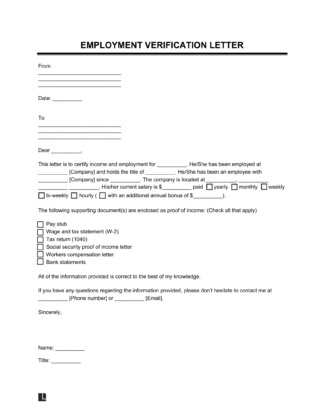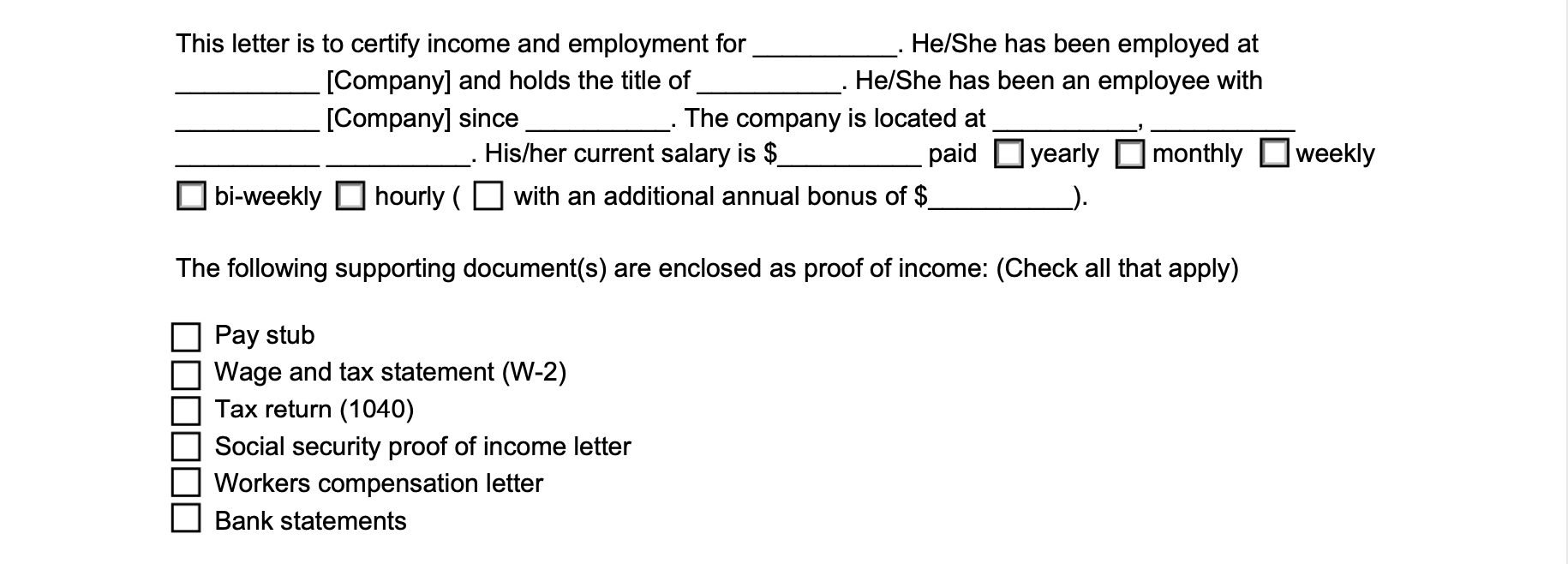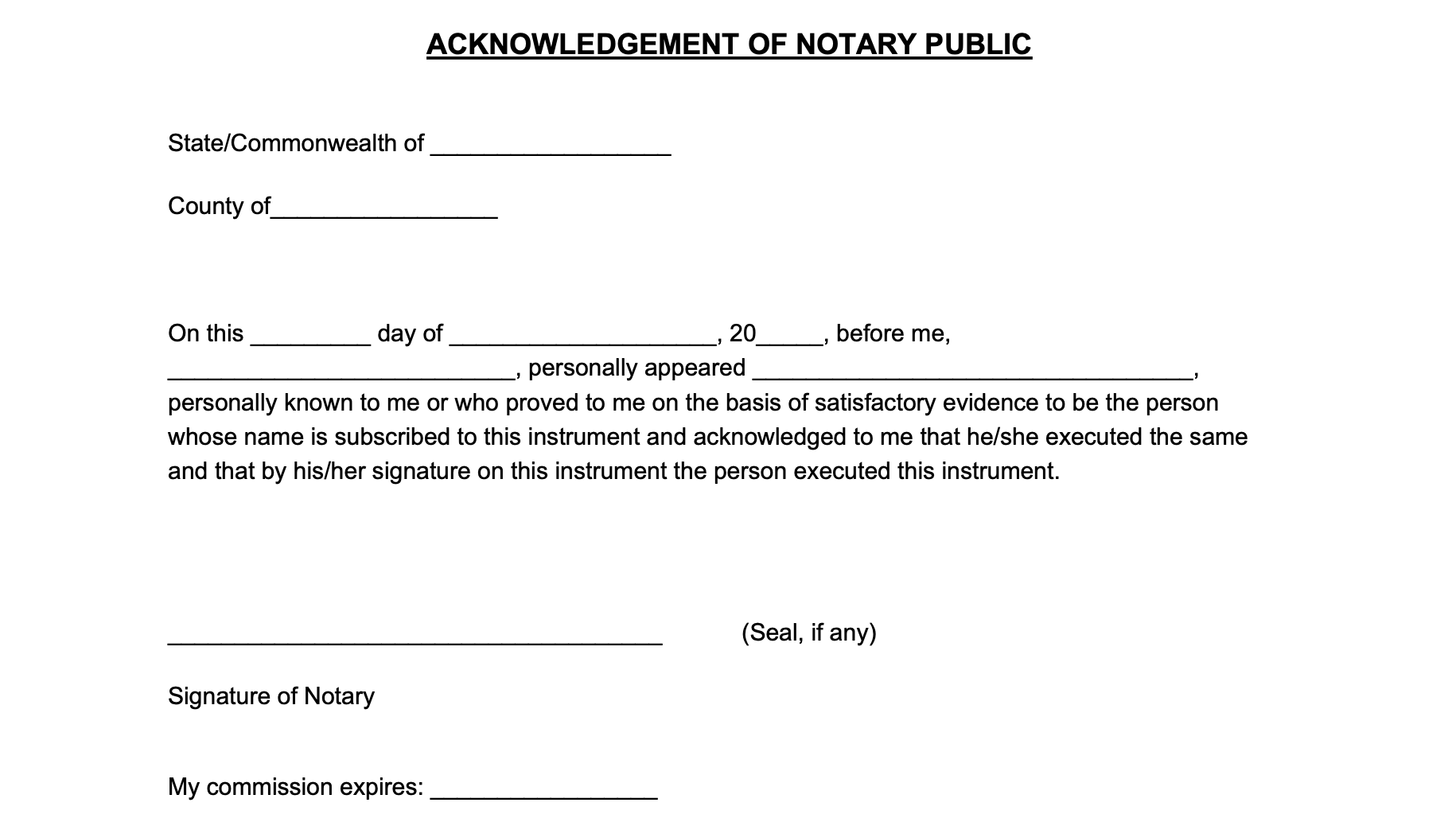
Use our employment verification letter to prove an individual’s salary and employment status.

Updated May 28, 2024
Written by Ioana Gagiuc | Reviewed by Susan Chai, Esq.
An employment verification letter confirms an individual’s current or past employment status and details. It validates income or employment history for loan applications, lease agreements, immigration purposes, and other use cases.
The main objective of an employment verification letter is to verify employment status rather than providing specific salary information, whereas a salary verification letter specifically confirms an individual’s income or salary with a company.
An employment verification letter (or proof of income letter) verifies a previous or current employee’s salary, employment history, and job responsibilities.
A verification letter is also a common third-party prerequisite to confirm that an individual has the income to make monthly payments for a significant expenditure — whether for a lease, mortgage, or loan.
Verifying parties typically submit this document in business letter format with their name, job title and contact information, current date, and the employee’s income or job status. It does not only verify employment but also may include additional details such as eligibility for rehire or the reason for termination in cases where applicable.
The following people, businesses, and organizations may ask for employment verification letters to learn more about an individual’s work experience and salary details:
An employment letter may also be necessary for immigration, work permits, or visa processes to assess an individual’s employment status and income.
If you haven’t yet received an individual’s income verification letter, you can request that they send it to you. Examine the document for potential issues, such as discrepancies in basic information or inconsistencies with the individual’s provided details.
Check the status of the business entity to confirm it’s real. Every state has a searchable business directory tool that you can use to conduct your research. Ensure the author of the individual’s letter matches the information on the Secretary of State’s website.
Get in touch with the employer via email or phone to confirm they composed and signed the letter. If you’re contacting them by phone, do so during traditional business hours for the best chance of a response. If the person you want to speak with isn’t available, ask their secretary or assistant to set up a virtual meeting time.
Ask for two of their most recent pay stubs. If they can’t provide this information, you may instead ask for proof of income like:
In many cases, self-employed individuals receive payments in cash. In such situations, it is advisable to obtain at least the tax returns from the past two years. Every individual in the U.S. must fulfill their tax responsibilities to the federal government, so if they earn any form of income, they will have filed a tax return.
Use a background check authorization form to collect the person’s information. Then, run a credit report through one of the three major credit reporting agencies: Transunion, Experian, and Equifax.
Here’s how to ask for an employment verification letter depending on whether you’re a former employee or an external party:
I am applying for a lease, and the landlord has requested proof of my employment. They’ve asked that you verify my dates of employment, job title, and salary.
Their address is: [Insert address]
They also accept verification via fax at [insert number]. Please let me know if there’s anything else you need.
[Position and Company]
Here are the steps to follow when writing an employment verification form:
Write down the employer’s details. Include the name (or company) of the current or past employer verifying the employment and the address.

Provide the name and address of the party requesting the employment verification, such as a bank or a landlord. If the requester is unknown, leave this blank.
Write the name of the contact person for the party requesting verification. If the requester is unknown, use “To Whom It May Concern” to address the letter.

Enter the name of the verified person. Also, provide their employment details, like their employer’s name, job title, employment start date, and company’s address.
Include supporting documents within this letter to verify the employee’s salary and bonus, if any. Remember that there are state and local laws regarding salary disclosure, and some require employee authorization.

Write the employer’s contact details, including their phone number and email address. Before sending, ensure to carefully edit and proofread the letter.

While this letter doesn’t require notarization, it can add to its legitimacy. If you’d like, have a notary witness the employer’s signature for authenticity.

Download an employment verification letter template in PDF or Word format below: